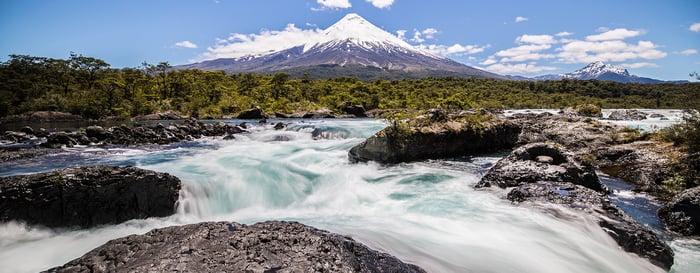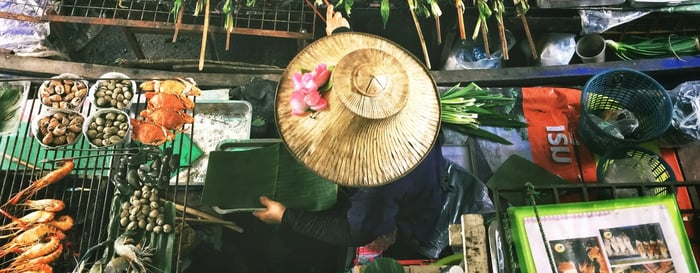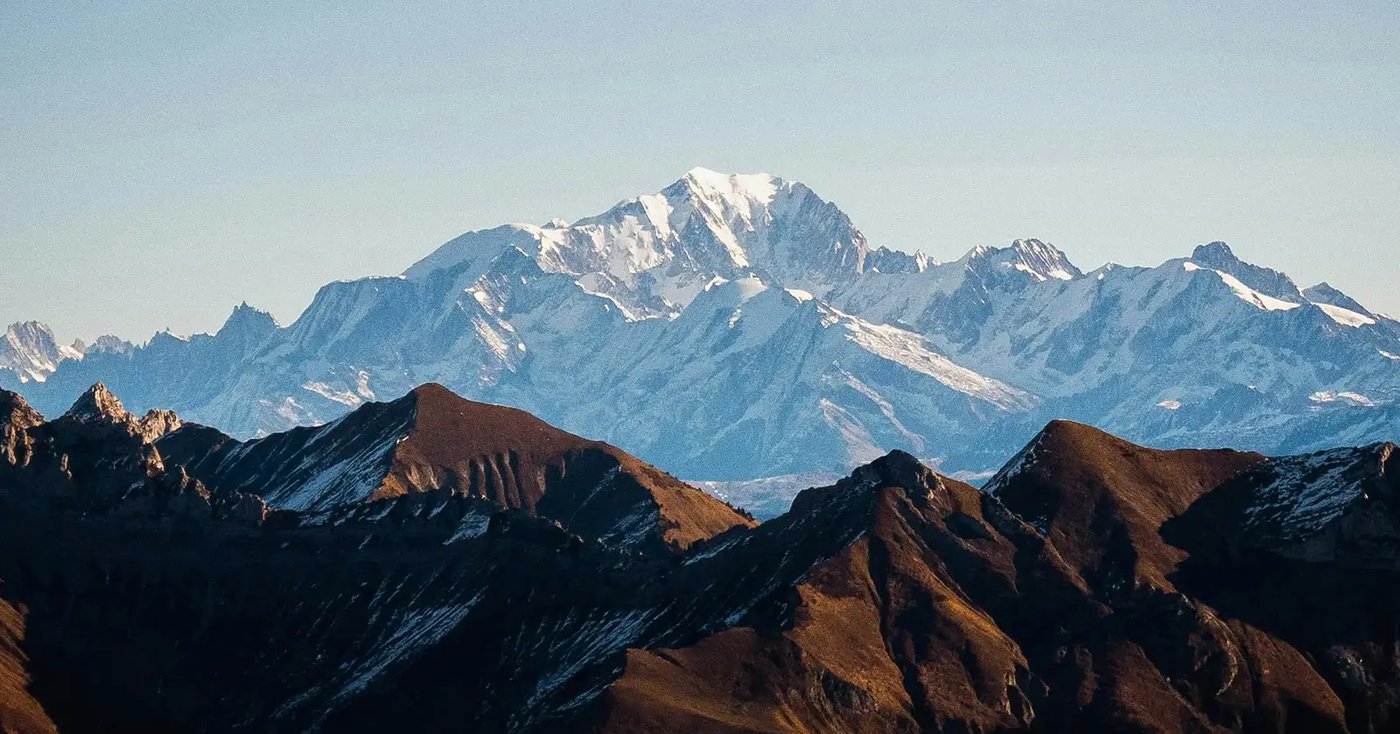Wandering between the ramshackle stalls of Rodriguez Market, I was stopped in my tracks by an array of multi-colored tubers piled high on a market stall – from pop-art colored pink and yellow papalisas to pebble-like chuño, these plump vegetables all look like they’re dusted with icing sugar, but they are actually freeze-dried in snow. An indigenous Aymara woman, with a bowler hat balanced at a precarious angle on her head, tells me proudly that her country has even more varieties than neighboring Peru.
Bolivia certainly has no shortage of esoteric raw ingredients, but in recent years, while Peru has morphed into South America’s gastronomic hotspot, no one put ‘Bolivia’ and ‘gourmet’ into the same sentence. That is until Claus Meyer – co-founder of Copenhagen’s legendary restaurant Noma – opened Gustu in the high-altitude city of La Paz in April 2013.
Meyer is convinced that it’s possible to change the world through food, and it followed a search for a less privileged country to launch a philanthropic project through his Melting Pot Foundation. He approached the Danish NGO IBIS and together they drew up a shortlist of three countries that met certain criteria – biological diversity, political stability, low crime, high poverty and, the key to his vision, cuisine with unrealized potential – and Bolivia came out on top.
Gustu – ‘flavour’ in the Andean language, Quechua – has gastronomic rules even stricter than Noma; everything, including alcohol, has to be from Bolivia. All Meyer imported was his New Nordic Cuisine ideology, state-of-the-art kitchen equipment, and two passionate young chefs, Kamilla Seidler from Denmark and Michelangelo Cestari from Venezuela.

“The Nordic region has a vast range of produce and our original idea for Gustu was to use ingredients from neighboring countries, such as Peru and Argentina,” Cestari told me. “But we soon realized that Bolivia had everything we needed and more. It has incredible biodiversity and much of it is untapped.”
Even Gustu’s décor reflects the country’s cultural diversity, from hand-carved replicas of wooden totem poles from the Jesuit missions, recycled Spanish colonial window frames, and colorful weavings from the highlands, and when I sat down to Gustu’s 11-course tasting menu, each beautifully presented course was a revelation.
Exploding with color and flavor, pink llama loin came with chuño glazed in apple and banana syrup; creamy amaranth was paired with pumpkin and tomato confit, and achiote – an Amazonian superfruit – the ice cream was topped with salty, home-smoked bacon and tart cherries. All washed down with unexpectedly good Bolivian wine from Tarija in the country’s southeast corner.
The Gustu project began as a food school, dedicated to training young, underprivileged Bolivians, with no experience and few prospects, in basic cooking and kitchen skills. It proved so popular that Manq’a (‘food’ in Aymara, another indigenous language of the Bolivian Andes) launched in July 2014, and to date, there are 11 schools – 10 in Bolivia and one in Colombia, with plans to expand further around South America – and 1,000 graduates. The original school, underneath the restaurant, now takes some of the best students and gives them advanced training in service and management, as well as cooking.
Gustu’s success has exceeded all expectations and last year it leapt to number 17 on Latin America’s best restaurant list. It’s not only changing the lives of its staff but also raising Bolivia’s global gastronomic profile, which in turn has given locals a renewed sense of pride in their cuisine.

Since Gustu’s launch, there’s now an award-winning bean-to-cup coffee, an artisanal chocolate from mixed with salt from the Salar de Uyuni (the world’s largest salt flats), and an increasing number of craft beers brewed from the Incan super grain quinoa.
And now the country’s home-produced grape spirit Singani is being challenged by a set of young entrepreneurial Bolivians who have launched 1825, a triple-distilled vodka using high-altitude Andean wheat and pure mountain water, and Gin La Republica, infused with bespoke blends of Andean and Amazonian botanicals.
And the Gusto team’s food movement hasn’t remained within the restaurants, it has spilled out onto the streets too. With around 90 percent of Paceñas eating dishes from street stalls every day, Meyer wanted to show visitors the delicacies that can be found within the city’s walls. So he launched another Melting Pot project, Suma Phayata, which is the city’s first official street food tour. Suma Phayata, which means ‘well cooked’ in Aymara, currently showcases five perfectly executed dishes from street cooks. I sampled everything from anticuchos, tender morsels of beef heart grilled over an open flame, to tucumanas, deep-fried pastries stuffed with meat or vegetables, and spicy tripe soup served from a street cart.

In Las Cholas Park, Doña Cristina welcomed me with a warm smile. Delighted to have been chosen from the long line of stalls selling the doorstep-sized sandwich de chola – thick slices of succulent roast pork, topped with chunks of crispy crackling, pickled vegetables, and piquant llajua sauce – she tells me that she been serving up this delicious staple for almost 60 years, and gets through two pig legs a day.
Gusto’s chef Cestari believes that they have just uncovered the tip of the iceberg for Bolivian cuisine and tells me about another Gustu project called LAB (Laboratorio de Alimentos Bolivianos), which is dedicated to recovering some long-forgotten and fast-disappearing ingredients from the mountains, lakes, and jungle. This again has opened the doors for other projects, such as Q’atu, Bolivian shops that stock homegrown health food; Gustu Logistics, which aims to empower local producers and indigenous groups, and Thani Wawas which, together with the Ivar Mendez Foundation, is developing sustainable and nutritious food for children in impoverished rural communities. And if that’s not enough, La Paz is also about to see the launch of Ara, a more budget-friendly bistro that offers locals and visitors a healthier take on carb-heavy traditional dishes.
As Meyer says: “For a chef, Bolivia is a treasure. Together we will find the key so that Bolivia’s food culture can become a driving force for social and economic progress and a source of unity and pride.
Classic Chile
Santiago & Surrounds Atacama Desert Chilean Lake District Chilean Patagonia
- Dine at the renowned seafood restaurants of Chile’s Santiago
- Explore the landscapes of the Atacama Desert on foot or horseback
- Hike through the rainforest to the Petrohue waterfalls in the Lake District
- Witness the gigantic glaciers and desolate landscapes of Patagonia
- Sample fine wines on a tasting tour of the Chilean Winelands
Classic Thailand
Bangkok Chiang Mai, Chiang Rai & the Golden Triangle Phuket & Khao Lak Thailand Asia
- Explore Bangkok’s beautiful temples and vibrant streets
- Learn how to create local Thai dishes in Chiang Mai with a private cookery class
- Laze on some of Phuket's best white sandy beaches
- Sample various local foods, old-style Thai coffee and Thai sweet desserts
- Visit the Thai Elephant Conservation Centre and watch these wonderful animals in their natural habitat
Luxury Lodge Experience In New Zealand
Bay of Islands & Northland Napier & Hawkes Bay Queenstown, Milford Sound & Southern Lakes New Zealand Australasia
-
Experience three of New Zealand’s top luxury lodges
-
Play a round of golf on two of the world’s top golf courses
-
Enjoy scenic flights over some of New Zealand’s most stunning landscapes
-
Meet the kiwi, New Zealand’s rare and endangered national bird
-
Discover the beauty of Milford and Doubtful Sounds on South Island









